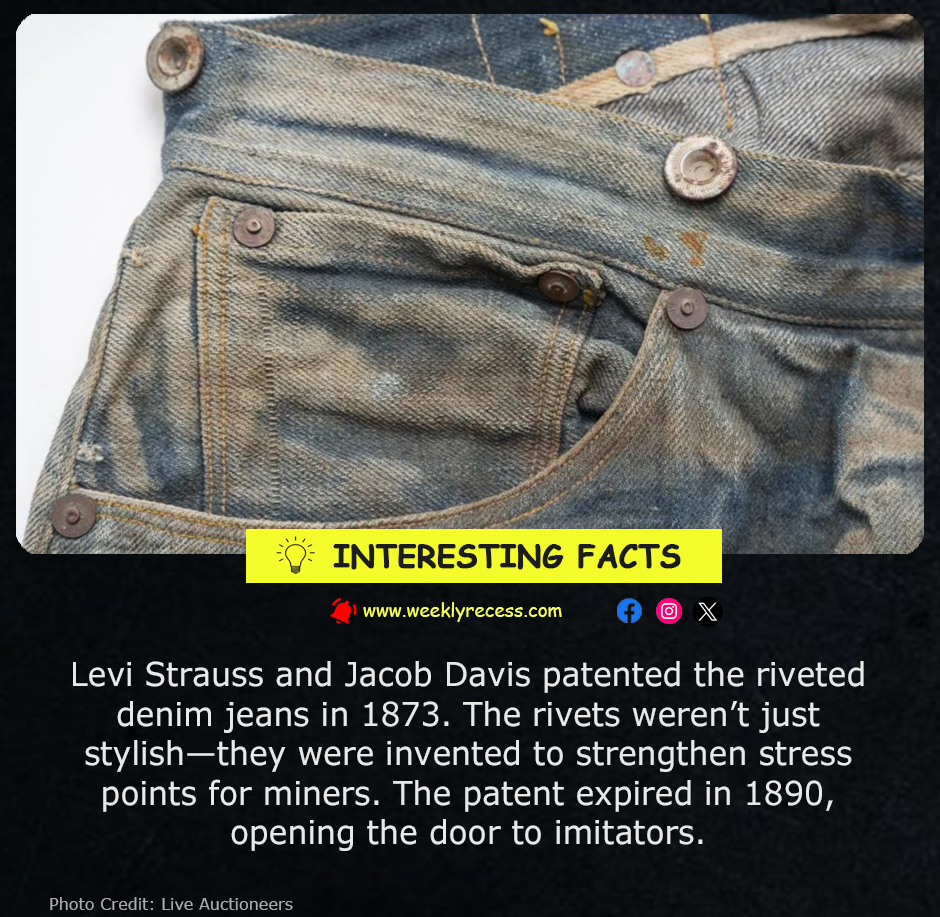The iconic blue jeans we know today owe their durability to a practical invention born out of necessity during the American Gold Rush. In 1873, tailor Jacob Davis partnered with dry goods merchant Levi Strauss to patent denim trousers reinforced with copper rivets at key stress points like pockets and the fly. Originally designed for miners and laborers who needed tough, long-lasting workwear, these rivets prevented the pants from tearing under strain. The design quickly caught on, revolutionizing workwear. When the patent expired in 1890, other manufacturers jumped in to create their own versions—cementing jeans as a global wardrobe staple. What began as rugged utility soon evolved into timeless fashion, thanks to a few strategically placed metal studs.

Built in 312 BC, this Roman road has stood the test of time.

Doha, Qatar is the first city to use blue roads to lower asphalt temperatures by up to 20°C.

During WWII, British women carried gas mask handbags—blending fashion with survival; today, they’re rare, clever collectibles.

Geta sandals elevate feet from mud and once let geishas announce their presence through distinct, echoing clicks

Legend says the Chesterfield was designed to keep coats crisp and catch cigar ash in its folds.







